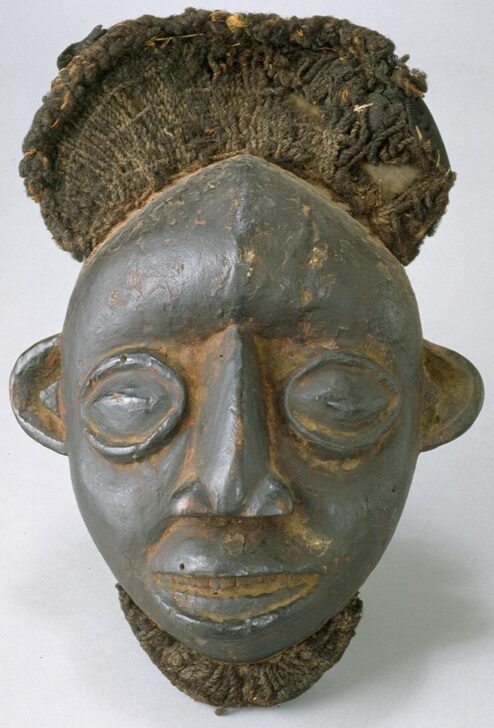Mask
Bamum; Bamileke; North West Province

Description
Subject Matter:
Like many other objects in the Cameroon Grassfields, masks are used to display a man’s social standing—though much less so than in the late 19th and early 20th centuries. Some masks are part of Kwifoyn, a regulatory society that acts as the executive body of Grassfields kingdoms with judicial and ritual roles. While Kwifoyn masks no longer play a large part in social control and law enforcement, they are still danced at commemorative celebrations for rulers and elite community members. Masks are also danced at annual festivals during the dry season. Other regulatory societies and important family lineages have masks of their own that are danced at these events, too. However, certain masks belonging to the royal palace and Kwifoyn are not danced, but used in a formal matter.
This male mask could possibly be a leader mask. Called Nkang, Nkam, Akam, or Kam—different kingdoms have different names—leader masks begin the procession of mask groups and lead the dances. Leader masks often have a semi-circular headdress and a beard. Although this mask doesn't have much decoration, beads, cowrie shells, and metal were used on royal masks.
References Cited:
Gebauer, Paul. 1972. "Cameroon Tobacco Pipes." African Arts 5, no. 2: 28-35.
Gebauer, Paul. 1979. Art of Cameroon. Portland, Or.: Portland Art Association.
Homberger, L. 2008. Cameroon: Art and Kings. Zürich: Museum Rietberg.
Northern, Tamara. 1984. The Art of Cameroon. Washington, D.C.: Smithsonian Institution.
Page, Donna. 2007. A Cameroon World: Art and Artifacts from the Caroline and Marshall Mount Collection. New York: QCC Art Gallery Press.
Physical Description:
Wooden mask in the form of a stylized human face. Large, round eyes sit below a prominent forehead. The ears are small semi-circles on each side of the head and the mouth is open to reaveal teeth. Human hair and natural fibers form the mask's headdress and beard.
Usage Rights:
If you are interested in using an image for a publication, please visit https://umma.umich.edu/request-image/ for more information and to fill out the online Image Rights and Reproductions Request Form.